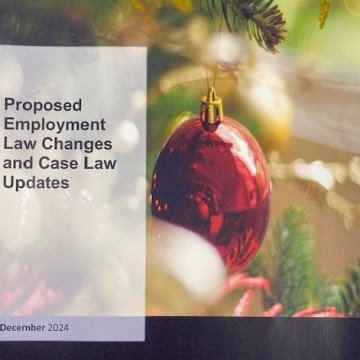The need for cost cutting and fiscal restraint has been repeated so often recently that it seems to have become an end goal in itself. However, in the wake of significant infrastructure failures over the past two weeks, questions must be asked about the price we pay for this.
Both the toppling of the Transpower pylon and the grounding of the Interislander ferry could have resulted in more dire consequences than they did, including loss of life. We do not know, at this stage, whether underinvestment was a contributing factor in either or both events, but it would be fair to assume that it had some bearing.
To what extent, therefore, is cost a relevant consideration in assessing an employer’s obligation to provide a safe workplace?
The Health and Safety at Work Act establishes a framework for ensuring the health and safety of employees and other people within places of work. At the core of the legislation is the primary duty of care on a person conducting a business or undertaking to take all “reasonably practicable” steps to ensure health and safety. This involves weighing a number of factors including the likelihood of a hazard occurring, the degree of potential harm, and the availability and suitability of ways to eliminate or minimise the risk.
Only after these factors have been considered should an employer turn its mind to the cost associated with eliminating or minimising the hazard. This in turn requires an assessment of whether the cost is “grossly disproportionate” to the risk.
In this regard the Act does not treat cost as an equal factor in considering what is “reasonably practicable”. Rather, there is a presumption that employers will do all things necessary to ensure health and safety and only if the cost of a measure grossly outweighs the risk it seeks to mitigate can it be a justification for not taking that step.
The “grossly disproportionate” threshold was incorporated into the Act in 2015 to ensure that people within workplaces are provided with the highest level of protection that is reasonably practicable. Whilst it allows for employers to undertake a “cost-benefit” analysis, it shifts the balance significantly in favour of health and safety by firstly relegating cost to being the last factor considered, and also setting a high bar. In this regard, it is not enough for cost to be “disproportionate”, it must be “grossly disproportionate”.
The United Kingdom regulator of Health and Safety has identified some specific factors that duty holders should take into account in conducting this analysis. They include ongoing costs, remote chances of a one off event occurring, daily expenses, and supervision time to ensure employees are wearing personal protective equipment.
The test provides for some degree of balancing the likelihood of the risk occurring and the severity of the consequences, against the cost of addressing it. Put another way, the less probable the risk the stronger the argument may be that the cost is grossly disproportionate.
In an old English case, the Court explained the weighing exercise as requiring “that a computation must be made by the owner, in which the quantum of risk is placed on one scale and the sacrifice involved in the measures necessary for averting the risk (whether in money, time or trouble) is placed in the other…”
However, in a 2016 New Zealand case involving the Ministry of Social Development, the Court noted that previous decisions had effectively found that no cost can be grossly proportionate to a high risk of death. That case related to the killing of MSD staff in Ashburton by a client, Russell Tully. In entering a conviction against MSD for failing to take all reasonably practicable steps to ensure the safety of employees, the Court said that “deterrence, denunciation and accountability” are the most important principles to consider in health and safety cases.
In order to comply with their obligations, therefore, businesses need to carefully work through each stage of the “reasonably practicable” test and make a realistic assessment of the level and degree of risk. Where there is a real risk to human life, cost should not be a material factor. This is not considered to be a reasonable “sacrifice” to make.
This article was originally published in The Post


